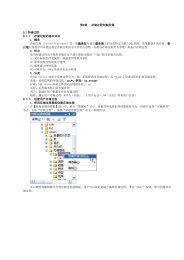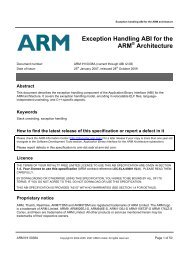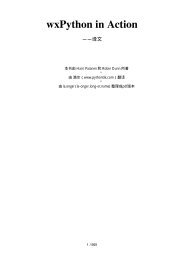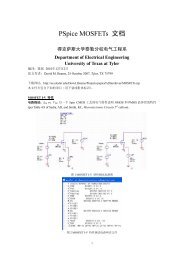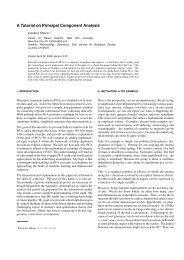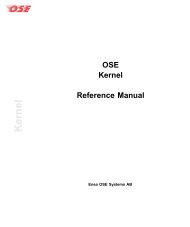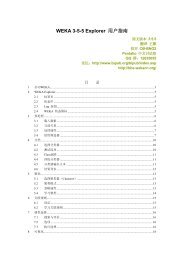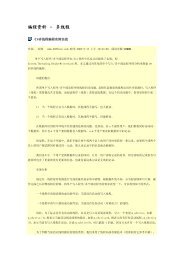Modern Portfolio Theory (MPT) Statistics
Modern Portfolio Theory (MPT) Statistics
Modern Portfolio Theory (MPT) Statistics
- No tags were found...
You also want an ePaper? Increase the reach of your titles
YUMPU automatically turns print PDFs into web optimized ePapers that Google loves.
Introduction<br />
<strong>Modern</strong> <strong>Portfolio</strong> <strong>Theory</strong> <strong>Statistics</strong> (<strong>MPT</strong> statistics) are based on the Capital Asset Pricing<br />
Model (CAPM) of expected returns developed by Nobel laureate William Sharpe and others in<br />
the early 1960s. The CAPM is based on <strong>Modern</strong> <strong>Portfolio</strong> <strong>Theory</strong> (<strong>MPT</strong>) developed in the 1950s<br />
by Sharpe’s teacher and co-laureate Harry Markowitz.<br />
In the terminology of another Nobel laureate, the late Milton Friedman, <strong>MPT</strong> is a normative<br />
theory, meaning that it is a prescription for how investors ought to behave. In contrast, the<br />
CAPM is a positive theory in that it meant to be a description of how investors do behave. The<br />
CAPM is based on <strong>MPT</strong> in that it assumes the all investors follow the prescriptions of <strong>MPT</strong>.<br />
The CAPM separates the excess return (i.e., total return minus the return on a risk-free<br />
security) of each security into two components: systematic excess return and unsystematic (or<br />
idiosyncratic) return. Systematic excess return is directly proportional to the excess return of<br />
the market portfolio. The ratio of the excess return of the market to the systematic excess<br />
return of the security in question is the security’s “beta.” Beta measures how sensitive the<br />
excess return on a security is to the excess return of the market as a whole.<br />
One of the main implications of the CAPM is that the expected excess return on a security is<br />
directly proportional to systematic risk as measured by beta and is not related to any other<br />
variable. This means that there are no rewards for taking on unsystematic risk. In an efficient<br />
market in which the CAPM holds, the only way to obtain an expected return above that of the<br />
market portfolio is to take on a beta above one.<br />
In the 1970’s, Michael Jensen proposed a performance measure for actively managed funds<br />
that is based on the CAPM called Jensen’s alpha or simply alpha. The idea of alpha is that a<br />
manager should not receive credit for achieving above-market performance by taking on<br />
systematic risk as measured by beta. Alpha is the average excess return that a portfolio<br />
achieves above and beyond that could have been obtained from position in the market portfolio,<br />
levered or de-levered so as the have the same beta as the fund.<br />
Morningstar <strong>MPT</strong> <strong>Statistics</strong>| July 31, 2008<br />
© 2008 Morningstar, Inc. All rights reserved. The information in this document is the property of Morningstar, Inc. Reproduction or transcription by any means,<br />
in whole or part, without the prior written consent of Morningstar, Inc., is prohibited. 2



